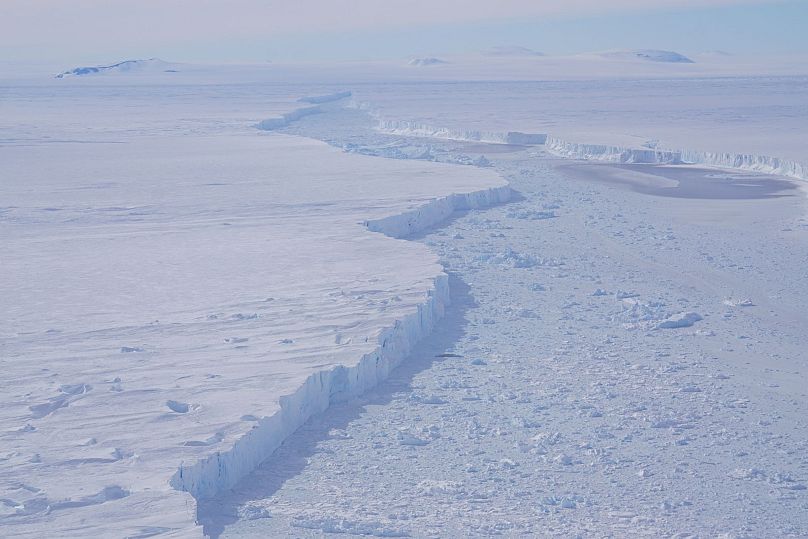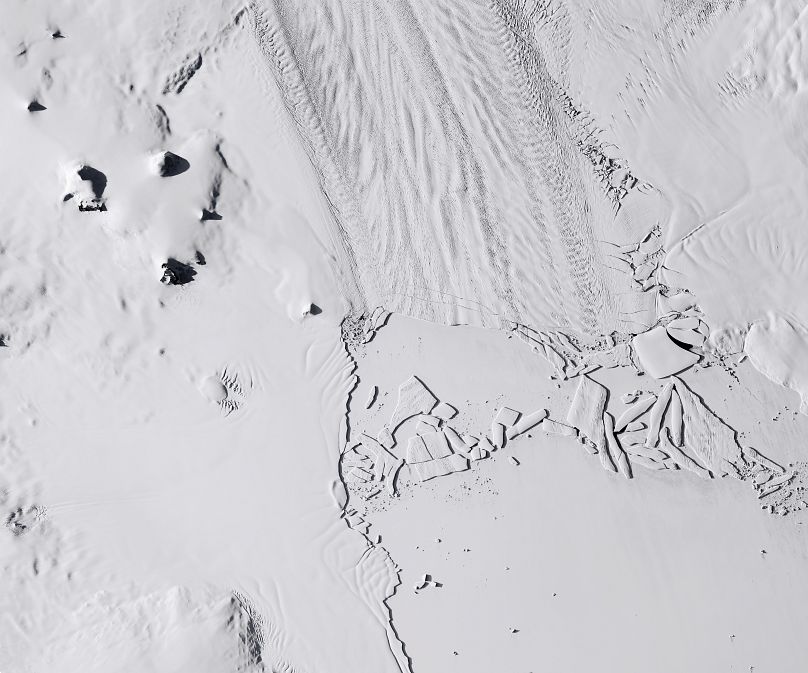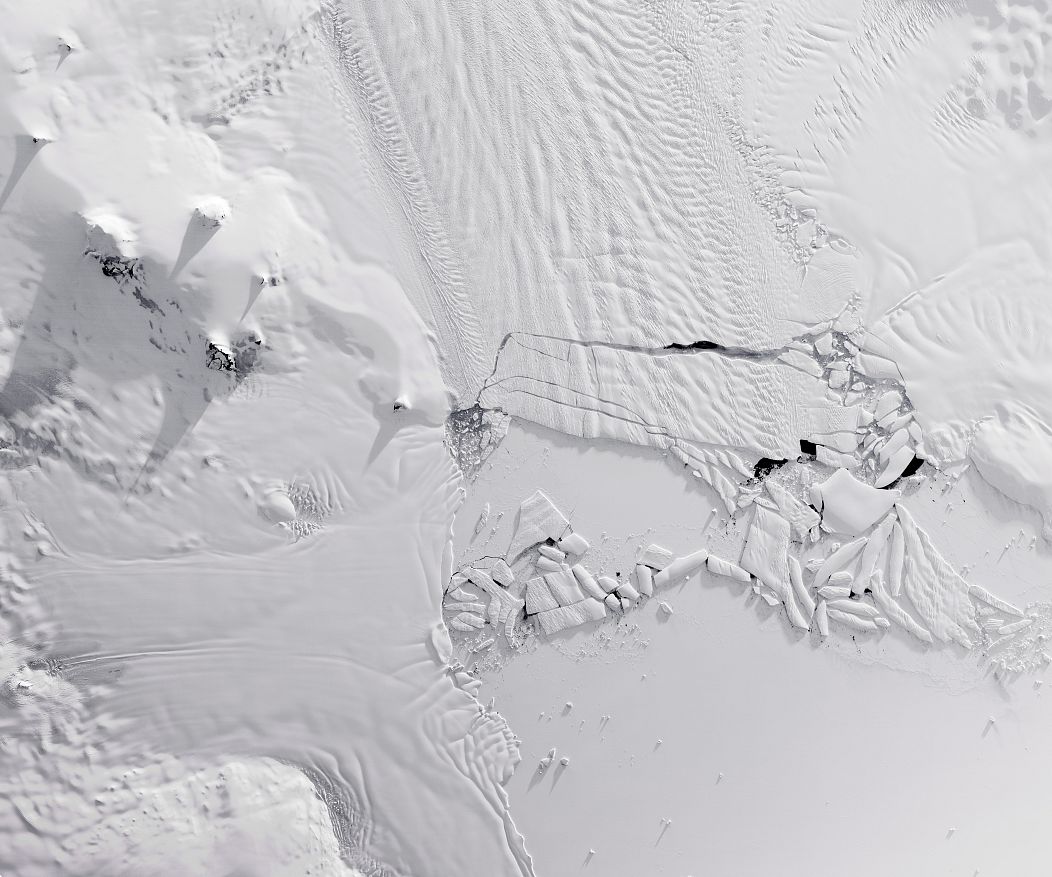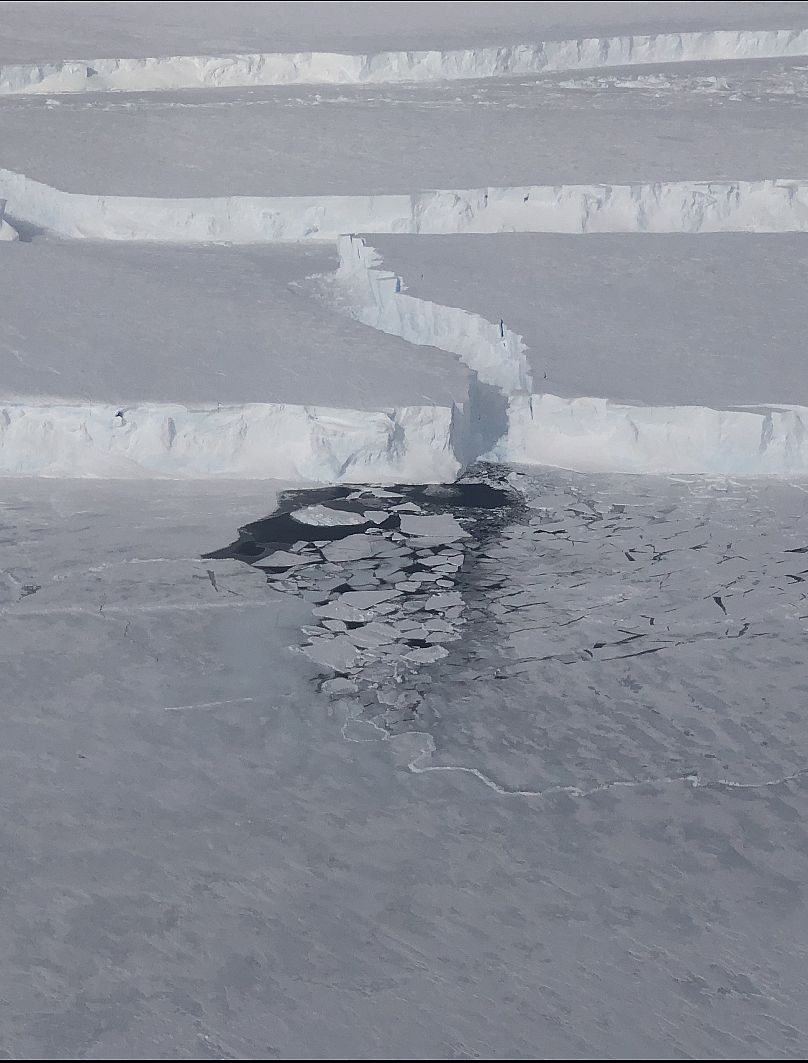The close-up photographs showed the giant iceberg that NASA said was "three times the size of Manhatten".
NASA this week published close-up photographs of a giant iceberg that it said was "three times the size of Manhatten".
The pictures were taken as part of the agency's Operation IceBridge and mark the first time anyone has seen the berg, dubbed B-46 by the US National Ice Center.
The giant mass broke off from Pine Island Glacier (PIG) in late October.
Pine Island Glacier in West Antarctica is known for dispensing icebergs into the Amundsen Sea, according to NASA, but the frequency of such events appears to be on the rise
The photos were taken on a flight last Wednesday as part of a long-running campaign to collect year-over-year measurements of sea ice, glaciers, and critical areas of Earth's ice sheets
On October 29, the National Ice Center estimated the surface area of B-46 at 66 square nautical miles (226.374km²).
The IceBridge flight's satellite imagery showed that the main iceberg was already beginning to break up.
Pine Island and nearby Thwaites Glacier alone are contributing about 1 millimetre per decade to global sea level rise, according to NASA.















